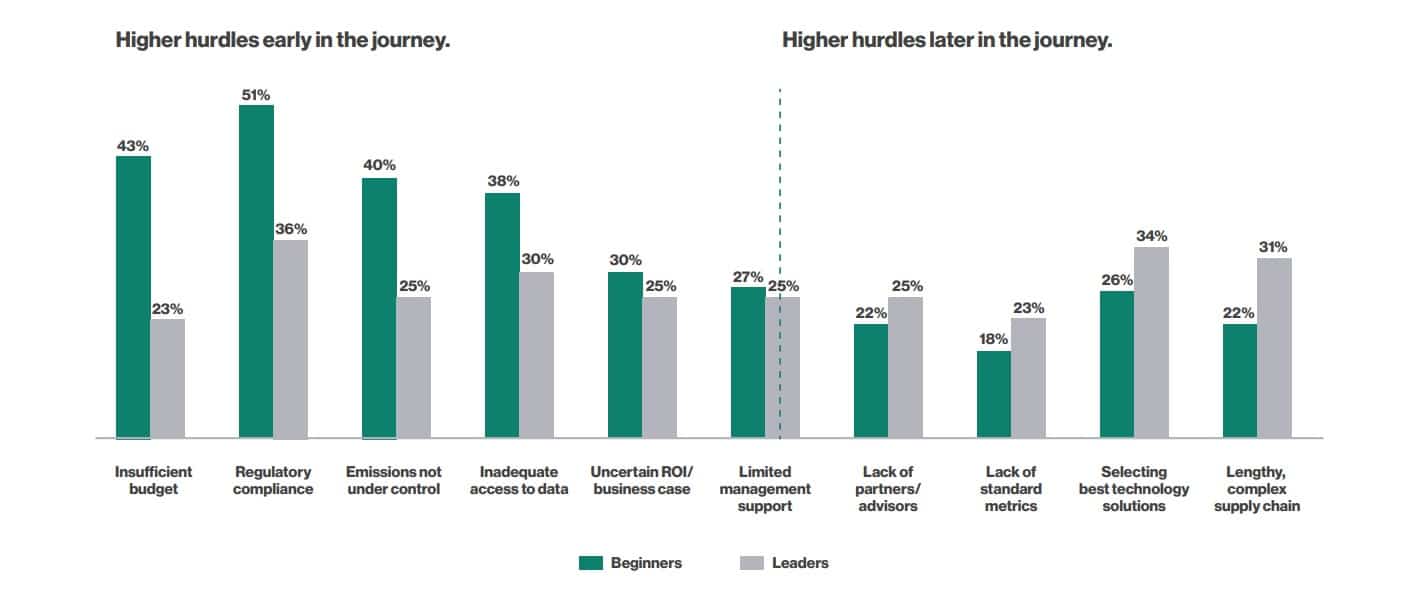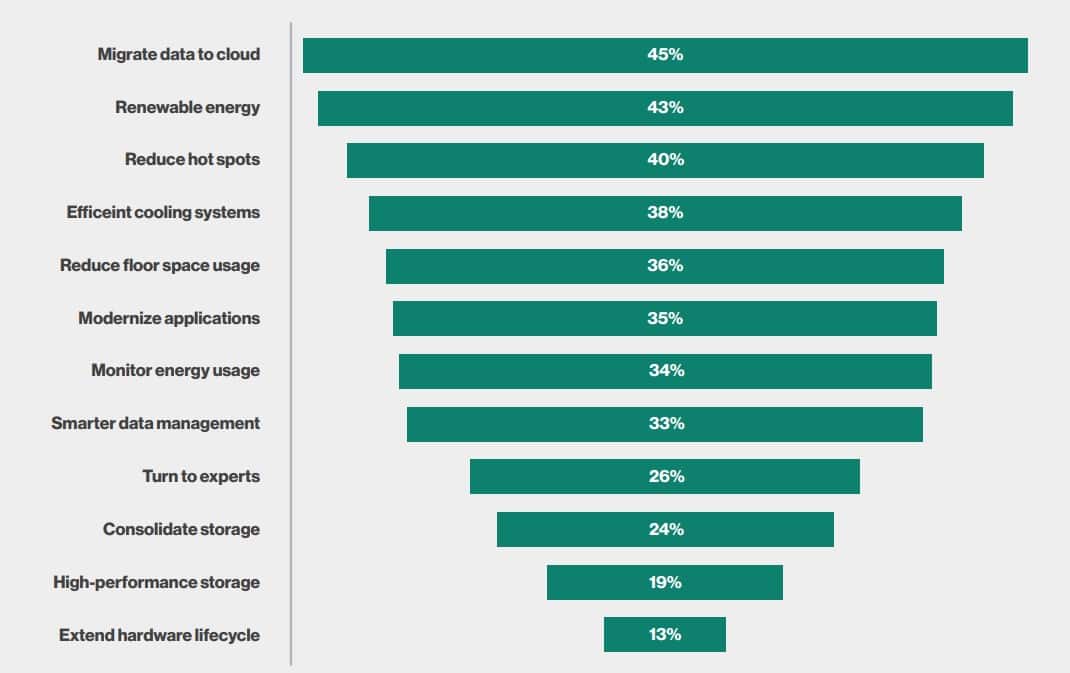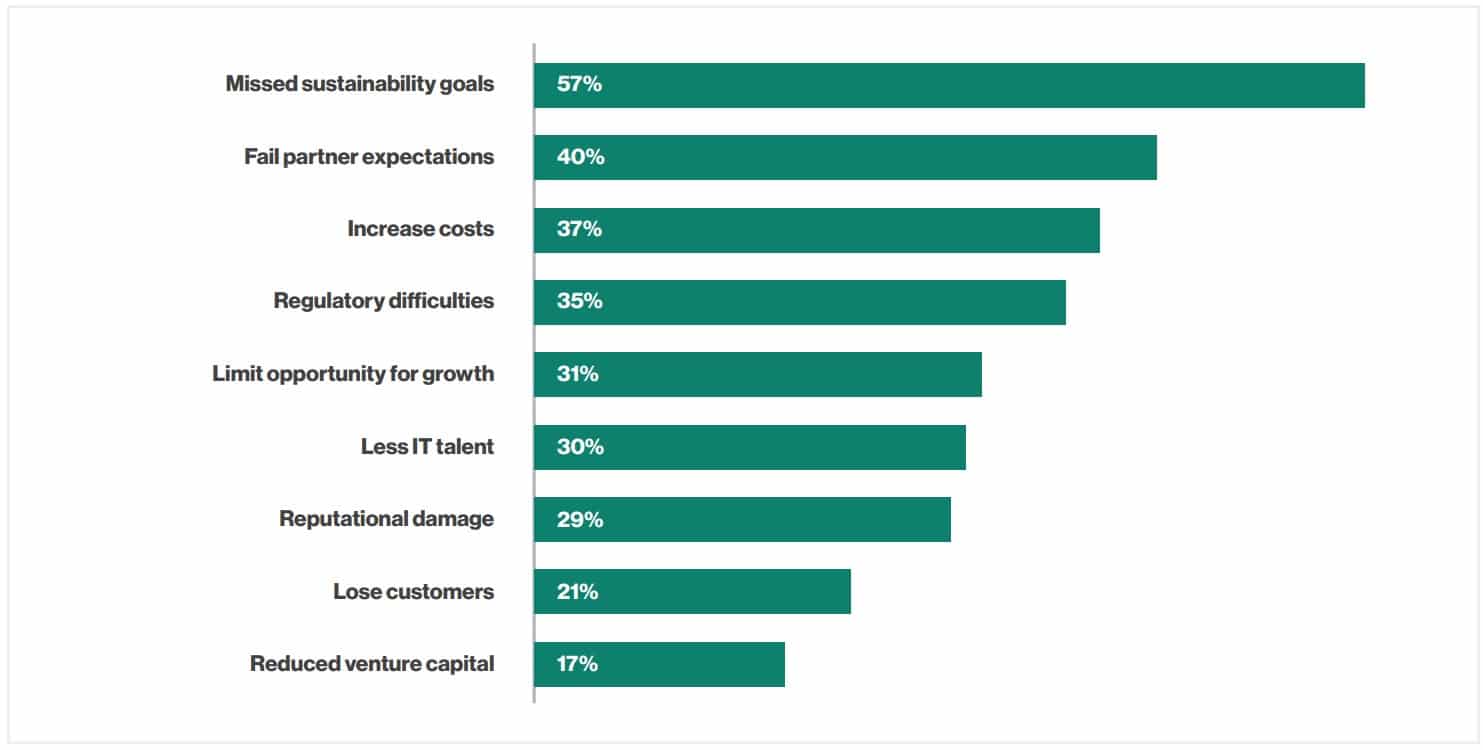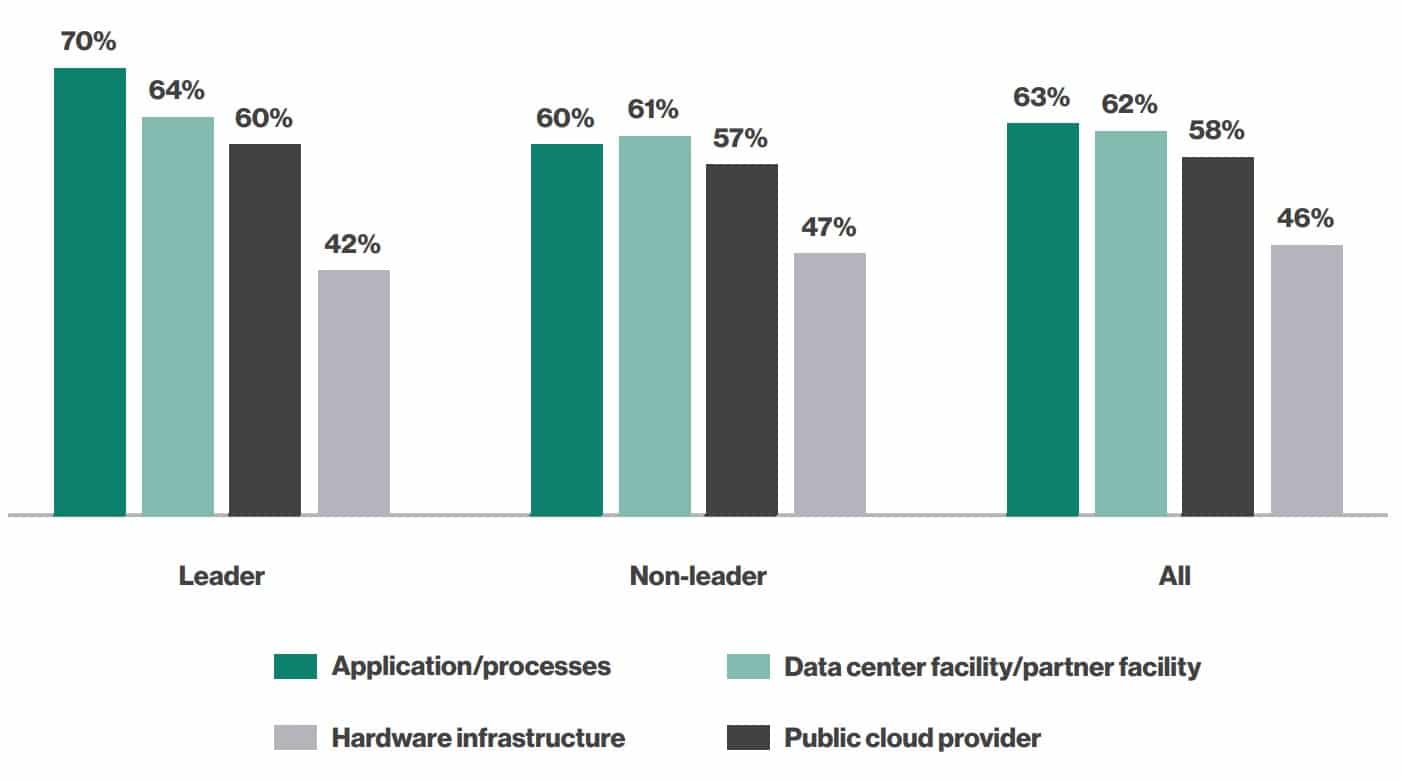Like most brands and businesses (and consumers) around the world, American companies have made sustainability a priority, with nearly four in five saying that they have developed plans for achieving carbon neutrality (78 percent) and net zero carbon emissions (79 percent), according to new research from data management and infrastructure firm Hitachi Vantara. However, despite this and the fact that 85 percent of respondents claim to be “on plan” or “ahead of plan” when it comes to their carbon reduction goals, the survey reveals that actual progress may not be as robust as many businesses believe.
The firm’s new State of Data Infrastructure Sustainability report, based on a global survey of 1,000 IT leaders and C-level business executives conducted by ThoughtLab Research, including 250 in the U.S., sought to shed light on the importance of sustainability for organizations and the steps being taken to address today’s data sustainability challenges.

Key U.S. findings include:
- Two in five (40 percent) organizations said they lacked a sustainability strategy and implementation plan.
- The timing for achieving their goals is still decades away; on average, organizations do not expect to be at net zero emissions until 2048, 25 years from now.
- The biggest challenge cited was keeping up with regulations (45 percent), however, 38 percent also noted that they had inadequate access to critical sustainability data.
- Complying with regulations was also cited as the primary driver of organizations’ sustainability efforts with 64 percent, while ethical obligations (54 percent) and talent acquisition/retention (41 percent) rounded out the top three.
- Four out of five respondents (80 percent) said that their data center carbon footprint had either stayed the same or increased in the past two years; less than two in five (19 percent) said it decreased at all, with only 2 percent saying it decreased more than 10 percent.
- Looking ahead two years, still more than half (51 percent) expect the carbon footprint of their data center will either stay the same or increase; only 12 percent expect it to decrease more than 10 percent.
Steps taken to cut data center carbon emissions and energy use:

“To get to net-zero, firms must establish a concrete strategy and implementation plan, with leadership buy-in, that takes a data-driven approach to emissions across the entire IT estate, including edge, on-prem, and off-prem,” said Mark Ablett, president of Digital Infrastructure at Hitachi Vantara, in a news release. “As the survey found, too many companies are allowing their strategies to be dictated by regulation, which can be a hindrance because it focuses on the needs of the day instead of the business case for sustainable operations. However, sustainability efforts can lower energy costs, save storage space, and help streamline operations and data management for greater productivity.”
Frequency in measuring carbon footprint of data center:

The critical role of the data center in reducing emissions
Despite the lack of progress in reducing the data center footprint, 60 percent of respondents said that creating an eco-friendly data center was a top priority for the organization, and when asked what steps they had taken already to reduce their carbon footprint, data center decarbonization was the top response at 56 percent. However, data center decarbonization was also most commonly cited as the area where firms need outside assistance, with 42 percent saying they needed third-party help. The second-most common step taken involved using the latest technological solutions to reduce carbon footprint at 48 percent, with 44 percent saying that they had created a corporate culture to support sustainability goals.
Negative impacts of failing to decarbonize data centers:

“The fact that data center decarbonization was the only area to gain more than 50 percent agreement suggests that there is still largely a lack of consensus about what steps to take,” Ablett added. “Broadly speaking, these disparities underscore the need for greater knowledge sharing and involvement of company leadership across the C-suite.”
In fact, part of the problem appears to be that executives across the C-suite are not fully aware of the importance of data center modernization to achieve their overall sustainability goals. CEOs, Chief Digital Officers (CDOs), and CTOs appear better informed, with 58 percent of CEOs and CDOs and 50 percent of CTOs saying that an eco-friendly data center is one of the most effective ways to reduce their company’s carbon footprint; however, only 14 percent of CFOs and 31 percent of Chief Sustainability Officers agreed.
A closer look at keys to sustainability success
Survey respondents were designated as being leaders, advanced, early implementers, or beginners, based on their level of progress in creating an eco-friendly data center by implementing eight key sustainability initiatives. Overall, leaders were more likely to say they had started taking steps to decarbonize their data centers, with nearly three-quarters (73 percent) of leaders saying they had started, compared to only 39 percent of beginners who said the same. However, when it came to goals for net zero carbon emissions, there was not as big of a gap, with leaders targeting 2048 for net zero compared to 2049 for beginners.
Data center decarbonization areas of focus over the next two years:

Download the full report here.
Commissioned by Hitachi Vantara, ThoughtLab Research interviewed 1,000 respondents globally, including 250 in the U.S., across a range of industries including financial services, manufacturing, transportation, healthcare, and public sector. The rest of the respondents were divided among Canada as well as the UK, Germany, Spain, Italy, and the Nordics in Europe; and India, China, and Australia in Asia Pacific. Nearly all of the respondents (96 percent) are from companies with 1,000 or more employees.




